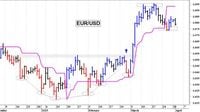On April 2, 2025, the Euro/Dollar exchange rate experienced a moderately positive start, hovering slightly above the previous day's closing levels. The Euro opened at 1.0792, reflecting a gain of 0.26% compared to the prior day. Meanwhile, the Euro showed little variation against the Japanese Yen, maintaining a rate of 161.615 without significant changes. This situation indicates a cautious trading atmosphere among investors, as they await crucial economic announcements.
As trading progressed, the Euro/Dollar exchange rate remained within a narrow range around 1.0800. Investors were particularly focused on an upcoming announcement from U.S. President Donald Trump regarding reciprocal tariffs, scheduled for the evening of April 2, 2025 (Italian time). The tariffs, expected to take effect immediately after the announcement, have raised concerns about potential destabilization of the global trading system.
U.S. Treasury Secretary Scott Bessent stated on April 1 that Trump intends to impose higher tariffs on major trading partners, specifically targeting the European Union. Bessent accused the EU of engaging in unfair trade practices, claiming that it does not purchase enough American goods. This looming tariff situation is causing apprehension among investors, who fear the implications for both the Eurozone economy and the Euro/Dollar exchange rate.
The Euro/Dollar exchange rate was recorded at 1.0795, marking a slight increase of 0.02% as of the time of writing. Analysts noted that a close below the support level of 1.0750 could lead to a target of 1.0700, followed by the annual level of 1.0668. Conversely, if the exchange rate closes above 1.0830, it could signal a recovery, with targets set at the annual level of 1.0877 and then 1.0900. A successful push towards the annual high around 1.0955 could also be in the cards, provided the exchange rate maintains upward momentum.
On the preceding day, April 1, the Euro/Dollar exchange rate had corrected, dipping below 1.0780. Despite this decline, the short-term technical outlook remains constructive. However, analysts suggest that a phase of reaccumulation is necessary before a significant upward trend can be established. A key indicator of strength would be overcoming the resistance in the range of 1.0850 to 1.0860. If the Euro can manage to break through this barrier, it would face further resistance at the 1.0910 to 1.0920 level.
Only a breakout above the resistance level of 1.0950 could provide a directional bullish signal, while a collapse of the graphic support in the area of 1.0765 to 1.0750 would trigger a negative signal, possibly leading to a more substantial correction.
The market is also anticipating important economic data, particularly the ADP employment report for March, which is set to be released at 14:15. This report is viewed as critical for assessing the strength of the labor market and, consequently, the future of U.S. monetary policy. Investors are keenly aware that the outcomes from this data release could significantly influence market sentiment and trading strategies.
The backdrop of these developments is compounded by recent macroeconomic data indicating a slowdown in U.S. economic activity, including a decline in the ISM Manufacturing PMI. This downturn has heightened concerns about a potential recession in the United States, further complicating the trading landscape for the Euro/Dollar exchange rate.
As the trading day unfolds, the Euro/Dollar exchange rate remains a focal point for investors, with the looming tariff announcement and upcoming economic data creating a volatile environment. Traders are advised to stay vigilant as market conditions evolve and to monitor the key support and resistance levels that could dictate future movements in this critical currency pair.






